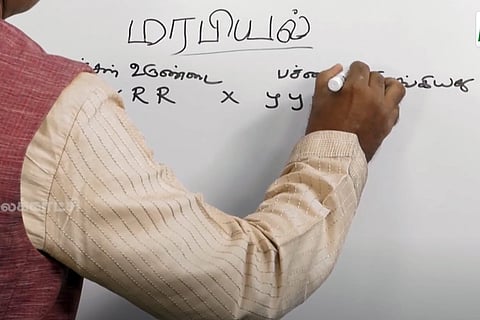

A day after the government of Tamil Nadu launched classes through its television channel Kalvi TV, activists and other stakeholders have flagged ground-level issues in the implementation of the project. From accessibility and awareness issues in the state’s tribal and hilly areas to issues around clarification of doubts for students with learning difficulties, grassroot workers and experts have demanded that the state government put more effort into the initiative.
The Chief Minister of Tamil Nadu Edappadi K Palaniswami, on Tuesday, launched the remote education initiative for students in the state through the state government’s education channel, Kalvi TV. Widely touted as an idea to bring students in government and government-aided schools on par with those in private schools, which have started online classes, Kalvi TV will telecast videos in half-hour slots from morning till late at night.
The e-learning website of the government of Tamil Nadu has put up the schedule for July and August. In July, the classes have been arranged subject-wise for students from Class 2 to 10 and for students interested in the National Eligibility cum Entrance Test (NEET) coaching. The broadcasts begin at 6 am and continue till 11 pm.
For August, the timetable has been drawn for Class 11 students as well, and the telecast starts at 5.30 am and goes on till 10.30 pm. The schedule has been created in such a way that videos pertaining to Class 9 students and above are only telecast in the first half of the day. The subjects for middle classes and primary classes are telecast later in the day.
In this backdrop, activists working closely with the students from tribal and hilly areas and parents-teachers association have raised pertinent questions around the model of delivery of classes.
For SC Nataraj, the Director of Sudar, an NGO working to provide education for children in the hilly and tribal areas of Erode District, the initiative of telecasting videos through TV is far better than arranging classes via the internet. “Initially, when it was said that classes will be given online, we were sure that it wouldn’t work because getting phone connectivity is hard in these regions. But now with classes through television, it is a lot easier since there is electricity in almost all villages and most houses have TVs,” he told TNM.
In the hilly regions of Erode district alone, there are around 500 children who are in classes 10 and 12 in the 20 government schools. Every year, before the academic year begins, parents and students are called for an orientation programme on the importance of education, Nataraj added.
“The biggest challenge, however, is that the students must sit and watch. Given the norm of conducting extensive orientation for parents before the start of the academic year, I think this will be difficult to achieve with classes broadcast on TV channels,” he explained.
He said that delegating the task of creating awareness among the tribal populace would be beneficial to ensure that students do not miss out on these classes. “My suggestion would be to delegate the work of creating awareness and providing orientation to local bodies since bringing in teachers from the city or town is not feasible now due to COVID-19. Let the local body representatives also take a call on whether it would be feasible to arrange a hall for the students and screen the classes for them together,” he added.
Another stark issue that stands out in terms of delivering classes through a TV channel is the lack of interaction between the students and the teacher. “It is a one-way street. There is no way to speak to the person teaching the class. The way we see it, students in government and government-aided schools who think about using these classes will definitely be missing out on that when compared with the private school students who have online classes. How will the schools monitor if the student attends a particular class? How will the student clarify his or her doubts on the topic?” S Arumainathan, the President of the Tamil Nadu Students-Parents Welfare Association, asked.
He also said that the need to push these classes at this juncture was to just try to bring in equality between students in government schools and private schools. “In reality, it does not work that way. The government needs to do more to make things actually equal for all the students across different strata of the society. When the state government introduced Samacheer syllabus, the actual teaching started only around September. The schools and the students still performed well. So we do not see a pressing need to push this onto the students at this juncture,” he added.
Speaking to TNM about the issues raised, Dheeraj Kumar, the Principal Secretary to government of Tamil Nadu (School Education) said that the department is still working on the different practical issues arising out of the Kalvi TV broadcast.
“We are working on a few modalities of outreach to Tamil Nadu’s remote places. The details will be finalised in a couple of days,” he said. When asked about the lack of interaction between the students and the teacher, and the possibility of students getting doubts on the syllabus being taught, Dheeraj Kumar said that students can be in touch with their subject teacher to ask questions.
He also noted that the schools, when they eventually reopen, could conduct small evaluations on the students’ knowledge and decide if they have to teach these concepts again in the classroom. “It is the schools’ call. The teachers and the principals can decide that based on the situation in their schools. Students need not be scared of missing these programmes. These videos will be available on the e-learning website for future references,” he added.